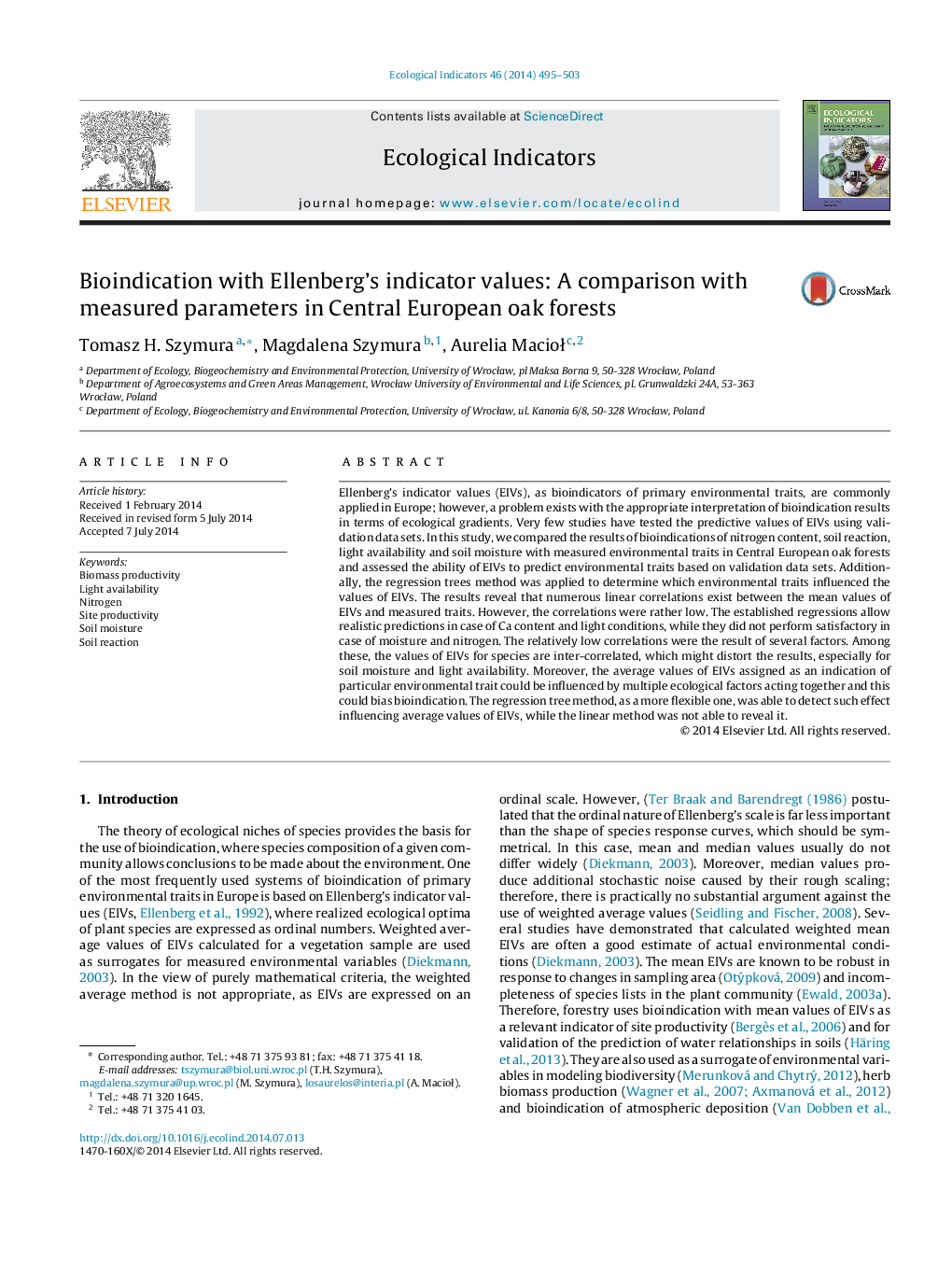| Article ID | Journal | Published Year | Pages | File Type |
|---|---|---|---|---|
| 6294932 | Ecological Indicators | 2014 | 9 Pages |
Abstract
Ellenberg's indicator values (EIVs), as bioindicators of primary environmental traits, are commonly applied in Europe; however, a problem exists with the appropriate interpretation of bioindication results in terms of ecological gradients. Very few studies have tested the predictive values of EIVs using validation data sets. In this study, we compared the results of bioindications of nitrogen content, soil reaction, light availability and soil moisture with measured environmental traits in Central European oak forests and assessed the ability of EIVs to predict environmental traits based on validation data sets. Additionally, the regression trees method was applied to determine which environmental traits influenced the values of EIVs. The results reveal that numerous linear correlations exist between the mean values of EIVs and measured traits. However, the correlations were rather low. The established regressions allow realistic predictions in case of Ca content and light conditions, while they did not perform satisfactory in case of moisture and nitrogen. The relatively low correlations were the result of several factors. Among these, the values of EIVs for species are inter-correlated, which might distort the results, especially for soil moisture and light availability. Moreover, the average values of EIVs assigned as an indication of particular environmental trait could be influenced by multiple ecological factors acting together and this could bias bioindication. The regression tree method, as a more flexible one, was able to detect such effect influencing average values of EIVs, while the linear method was not able to reveal it.
Related Topics
Life Sciences
Agricultural and Biological Sciences
Ecology, Evolution, Behavior and Systematics
Authors
Tomasz H. Szymura, Magdalena Szymura, Aurelia MacioÅ,
